A World Born from Chaos - Gaia, Tartarus, Eros, and the First Creation
Ancient Greek mythology tells of the beginning of the world. Based on Hesiod's Theogony, this article explores how from the void of Chaos, the Earth (Gaia), the Abyss (Tartarus), and Love (Eros) emerged to shape the primordial cosmos.
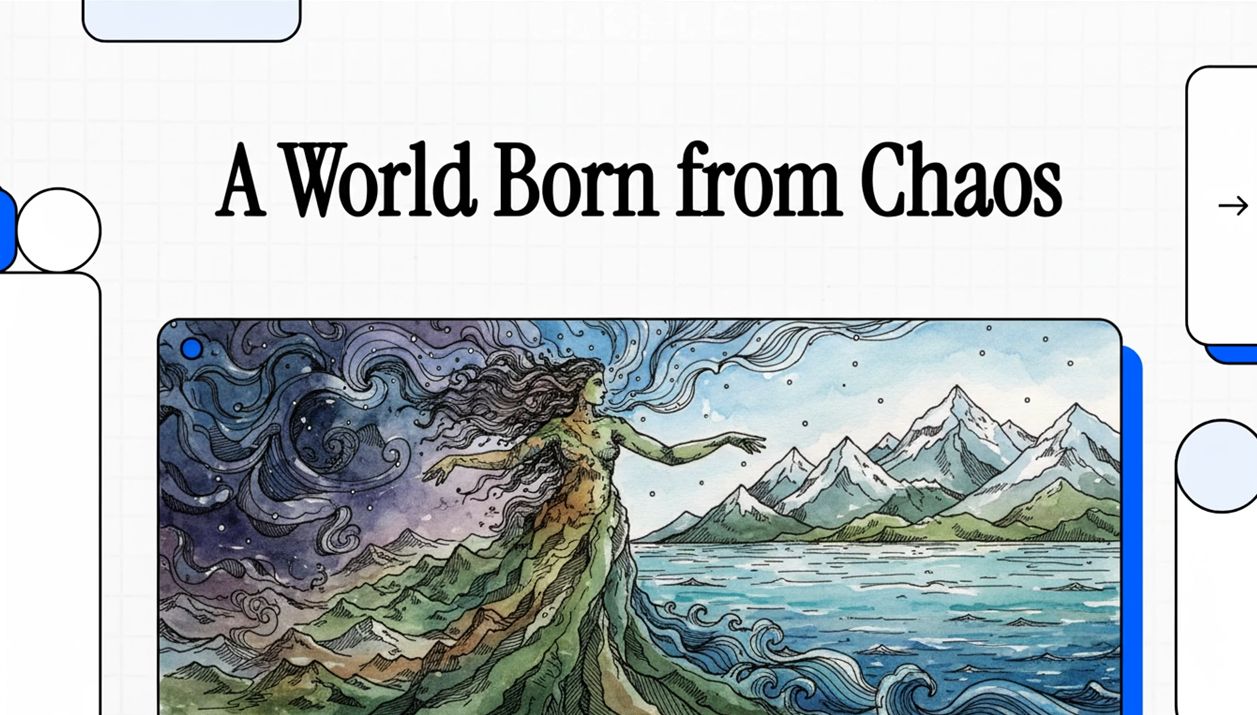
A World Born from Chaos - Gaia, Tartarus, Eros, and the First Creation
What was there before the world began? The ancient Greek poet Hesiod, in his epic poem Theogony, sang of the origins of the gods and the cosmos. It is a tale of creation and generation, beginning from the infinite, formless void of Chaos.
The “Chaos” Before All Things
The story opens in a primordial state, before gods or mortals, heaven or earth, existed. According to Hesiod, “Verily at the first Chaos came to be” (Hesiod Theogony 1.116). While modern ears might hear “chaos” and think of disorder, in the ancient Greek context, Chaos carried the nuance of a “void” or a “great chasm.” It was an infinitely vast, dark space holding the potential for all things to come into being.
From this fundamental Chaos, the first beings began to differentiate. First came Erebus (Darkness) and Nyx (Night), two forces symbolizing darkness (Hesiod Theogony 1.123). Then, from their union, the dark Nyx brought forth their opposites: Aether (celestial light) and Hemera (Day) (Hesiod Theogony 1.124–125). Thus, from the empty void came darkness, and from that darkness came light, establishing the fundamental duality of the cosmos.
The First Three - Gaia, Tartarus, and Eros
Following the birth of Chaos, three immense powers that would constitute the world appeared, almost simultaneously and spontaneously. They were Gaia (Earth), Tartarus (the Abyss), and Eros (Love). These beings were not created by anyone; they emerged from Chaos as a cosmic necessity.
First to appear was “broad-bosomed” Gaia, the Earth Mother. She was born to be “the ever-sure foundation of all” the deathless ones who hold the peaks of snowy Olympus (Hesiod Theogony 1.117–118). Gaia was not merely the ground but the very womb of life, the stable foundation upon which all future myths would unfold.
Next came “dim Tartarus in the depth of the wide-pathed Earth” (Hesiod Theogony 1.119). This was the bottomless pit where the Titans would later be imprisoned. Its depth was said to be as far beneath the earth as the earth is from the heavens, a dreadful place loathed even by the gods (Hesiod Theogony 1.720–721, 1.810). Tartarus existed as the other cosmic pole, defining the unfathomable “below” in contrast to Gaia’s stable world “above.”
And alongside these two spatial forces appeared Eros. He was sung of as “the fairest among the deathless gods,” who “unnerves the limbs and overcomes the mind and wise counsels” of all gods and men (Hesiod Theogony 1.120–122). This primordial Eros, distinct from Aphrodite’s son in later myths, was the cosmic principle of “love” or “desire” itself—the force that binds all things and brings forth new life. With Gaia as the stage and Tartarus defining the depths, it was Eros who became the fundamental driving force for the grand genealogy of gods that was to follow.
Gaia’s Parthenogenesis - The Birth of Heaven, Mountains, and Sea
Once the fundamental forces of the cosmos were in place, Mother Earth, Gaia, began her first act of creation. Remarkably, without the aid of Eros, she brought forth new beings alone, through her own inherent power. This event, known as parthenogenesis, symbolized her overwhelming life-giving force.
First, Gaia bore Ouranos (Heaven), “equal to herself,” starry and vast, that he might “cover her all over, and be an ever-sure abiding-place for the blessed gods” (Hesiod Theogony 1.126–128). This image of the Earth birthing the sky to cover herself is self-contained, yet it gave the world a clear structure of “above” and “below.” The fundamental dichotomy of Heaven and Earth, central to the mythological world, was born here.
Next, Gaia brought forth the high Ourea (Mountains), described as the “graceful haunts of the goddess Nymphs who dwell amongst the glens of the mountains” (Hesiod Theogony 1.129–130). Through them, the flat earth was given contours and shadows, shaping a sacred, natural landscape.
And finally, “without sweet union of love,” Gaia bore Pontus (the Sea), the “fruitless deep,” born with his raging swell (Hesiod, Theogony 1.131–132). This sea, born without a partner, symbolized the vast and untamed primordial waters before they teemed with life.
In this way, Gaia single-handedly created all the fundamental components of the world: Heaven, the Mountains, and the Sea. The earth was covered by the sky, adorned with mountains, and surrounded by the vast sea. This grand scene of creation depicted by Hesiod eloquently reveals how the ancient Greeks perceived their world. All was now in place. Next, Gaia would lie with her son Ouranos to bring forth the next generation of gods, beginning with the Titans. The story of the world had only just begun.
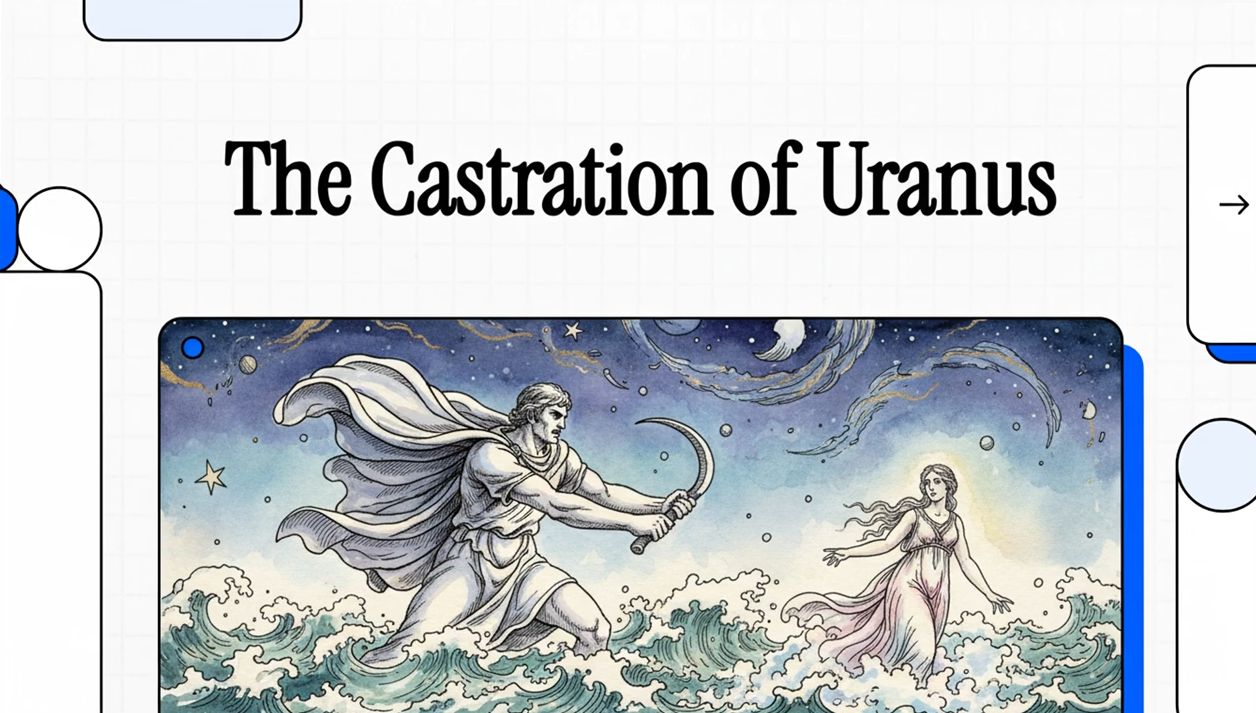
The Reign and Castration of Uranus - The First Succession and the Birth of Aphrodite
This article explores the epic tale from the dawn of Greek mythology, from the tyranny of Uranus to his castration by Cronus, and the subsequent birth of the Titans and Aphrodite, based on the accounts of Hesiod and Apollodorus.
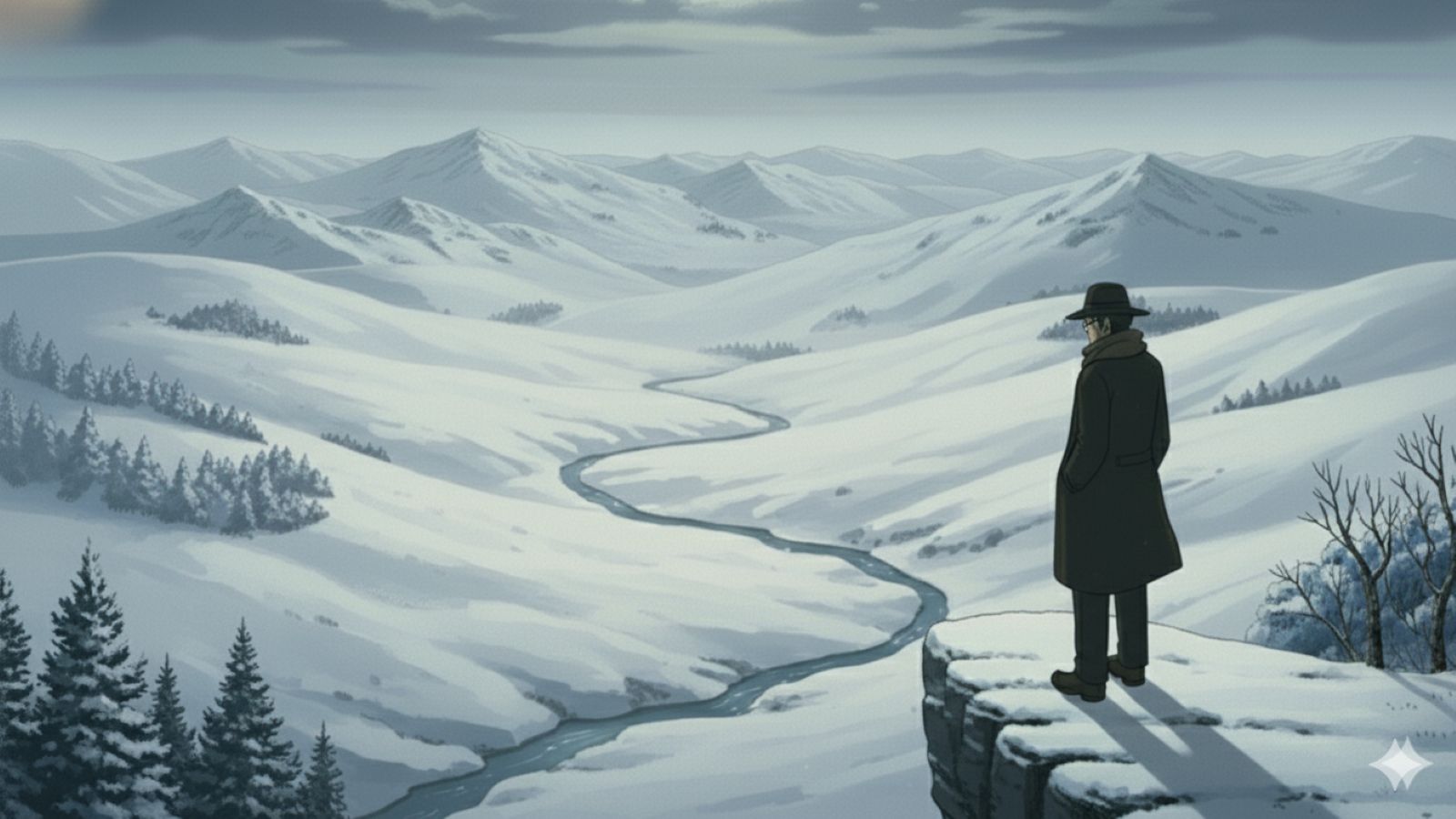
The Shadow Cast by Light - Solitude and Self-Esteem in Japanese Literature
When faced with dazzling happiness, why do we notice the depth of our own shadow and step back? This collection explores the painful yet beautiful relationship between happiness and solitude, which cling to each other like light and shadow. We take as our guide the words of literary giants-from the 'fear of happiness' depicted by Dazai and Soseki, to the 'affirmation of solitude' discovered by Nakahara and Miyazawa.
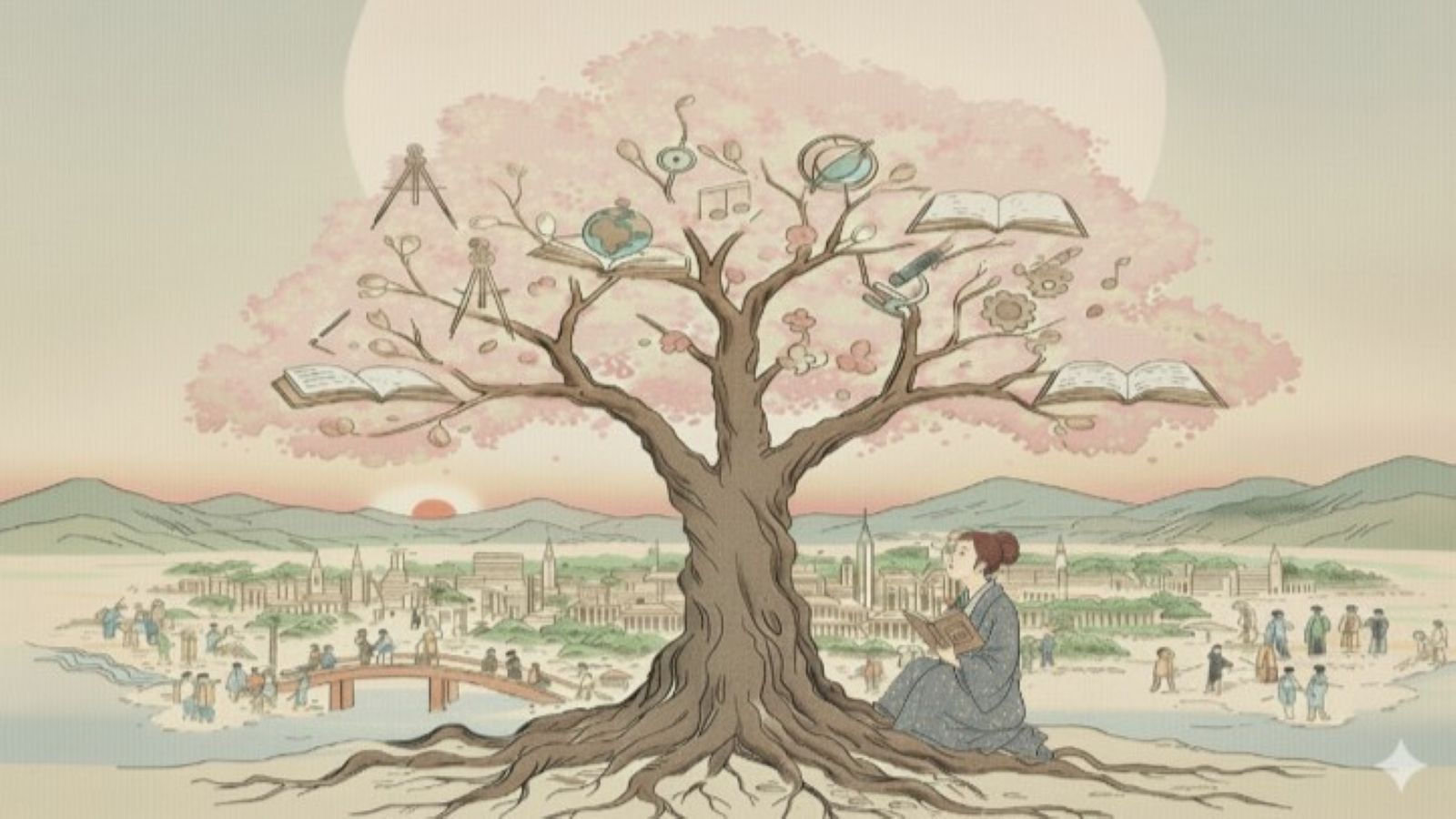
Words of the Ancients Resonating Today - A Quest for True Freedom and Independence
In a world overflowing with information and values, can we truly say we are living as "ourselves"? The words of figures like Fukuzawa Yukichi and Nitobe Inazo pose fundamental questions to modern people, who are often captivated by material wealth and the evaluations of others. Their words quietly suggest that the path to unwavering freedom and independence lies in polishing our inner selves through our own learning and contemplation, and choosing to act with responsibility.
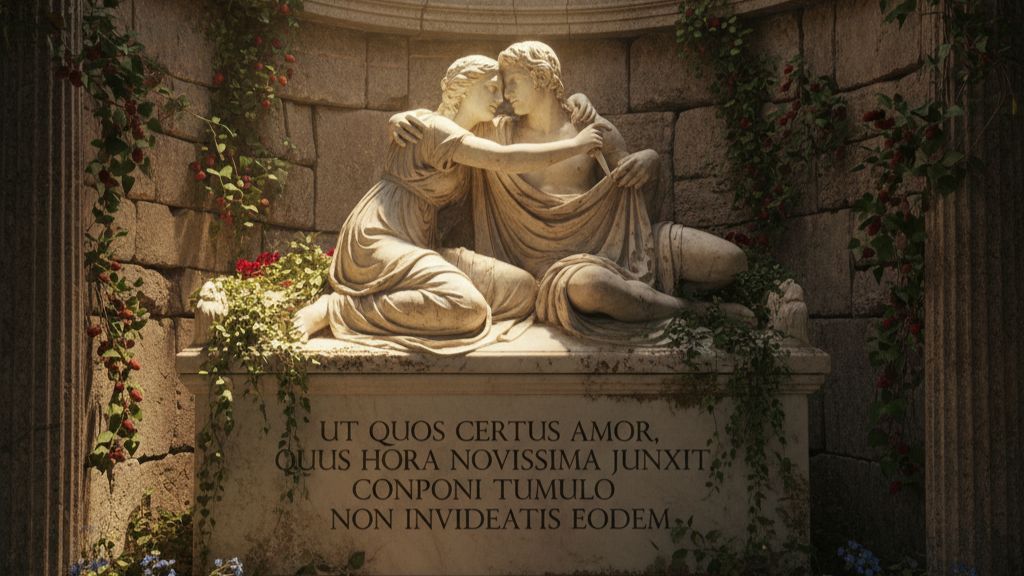
Ancient Wisdom on Love and Partnership - How Plutarch and Ovid Taught Us to Build Bonds
How are trust and love nurtured? Ancient Greek and Roman philosophers and poets left behind deep insights into the bonds of marriage and the essence of love. This collection explores the timeless truths of partnership.